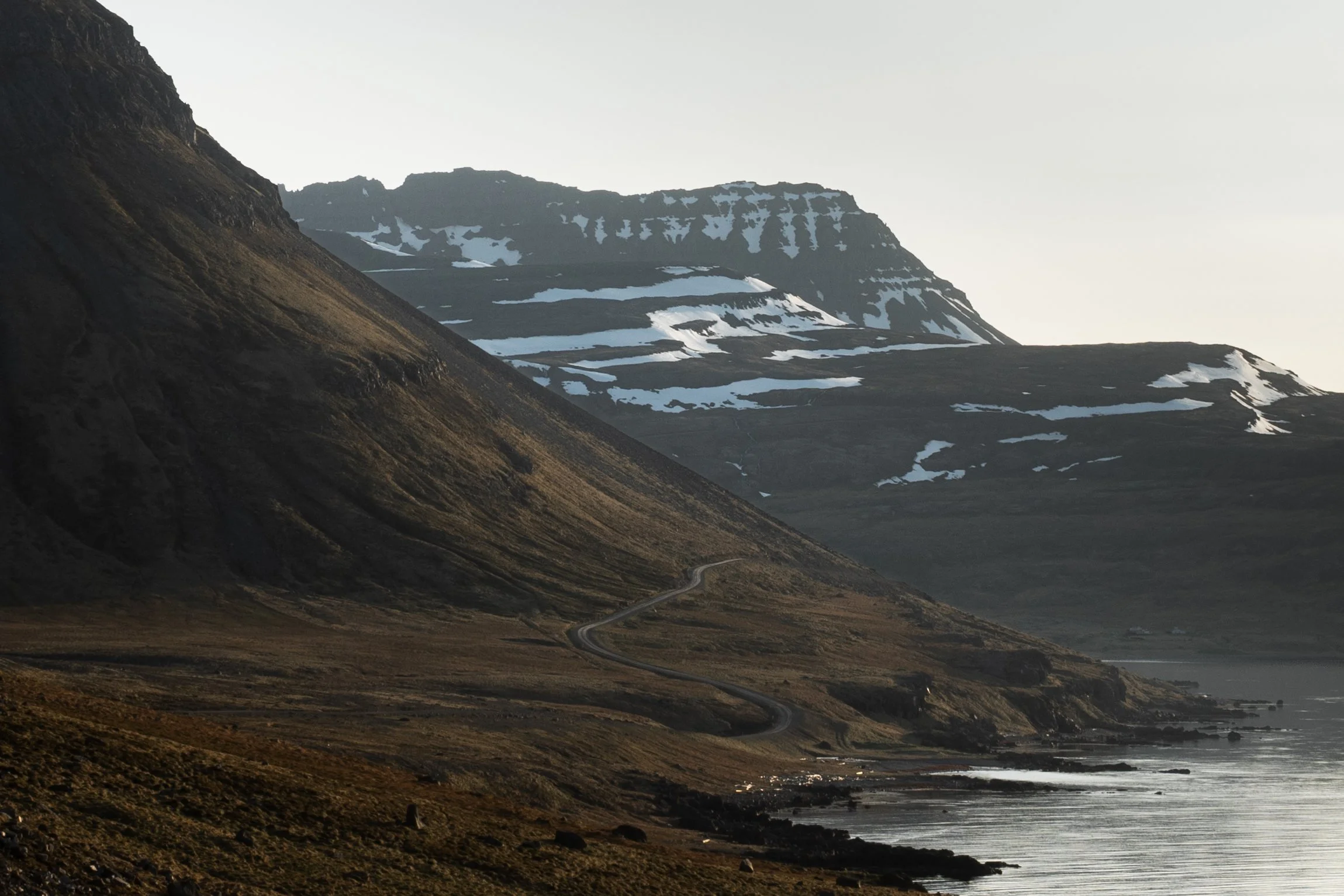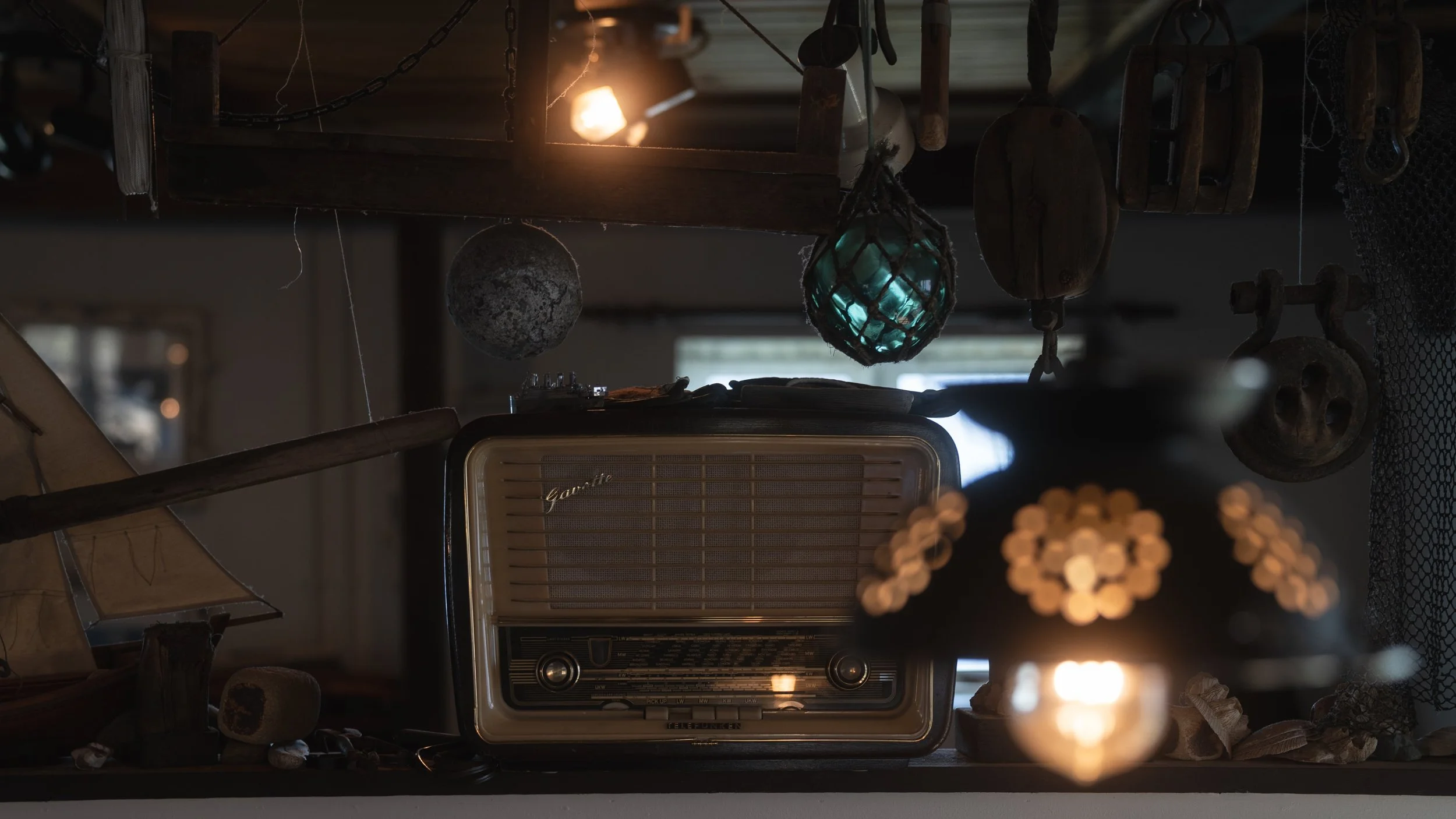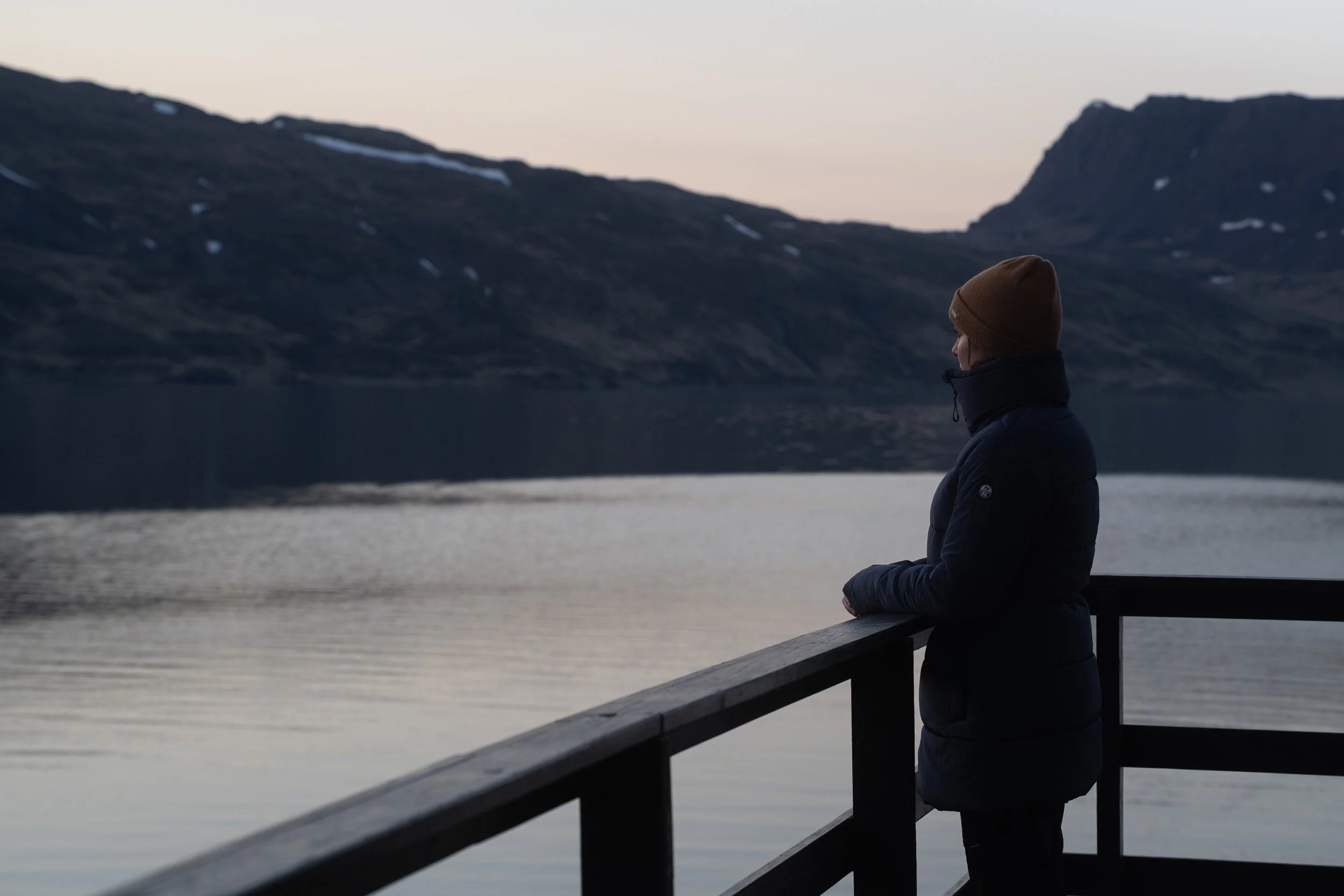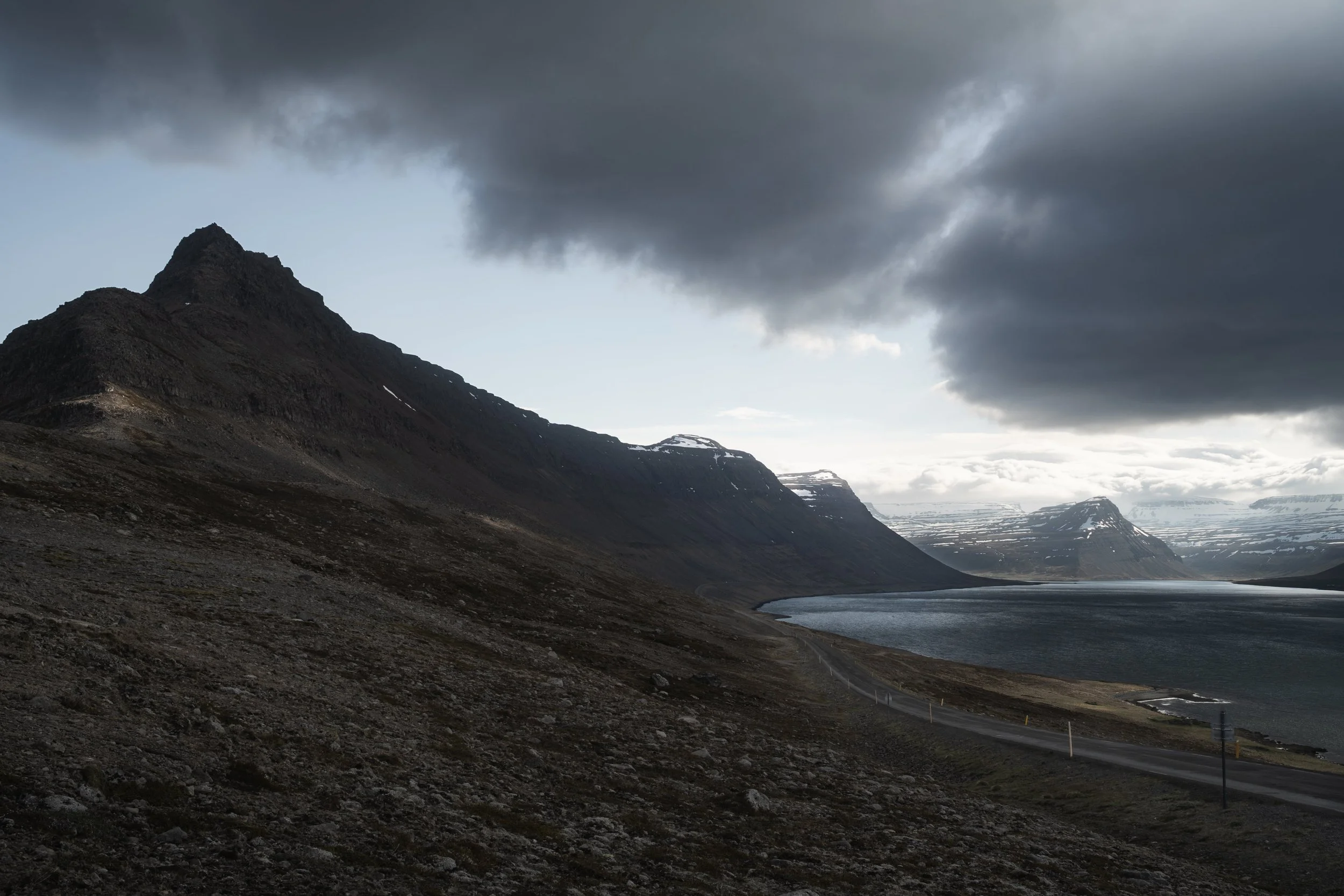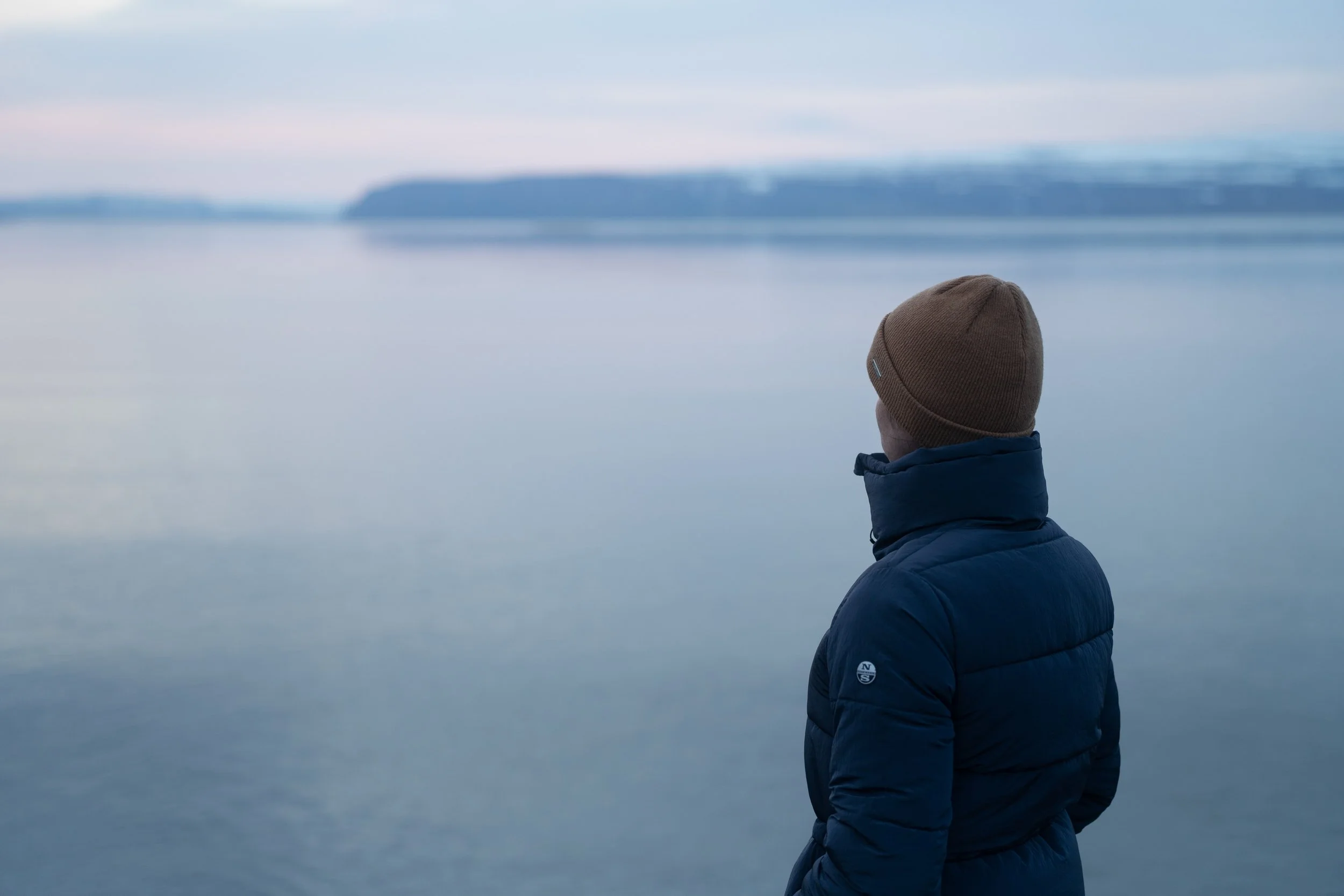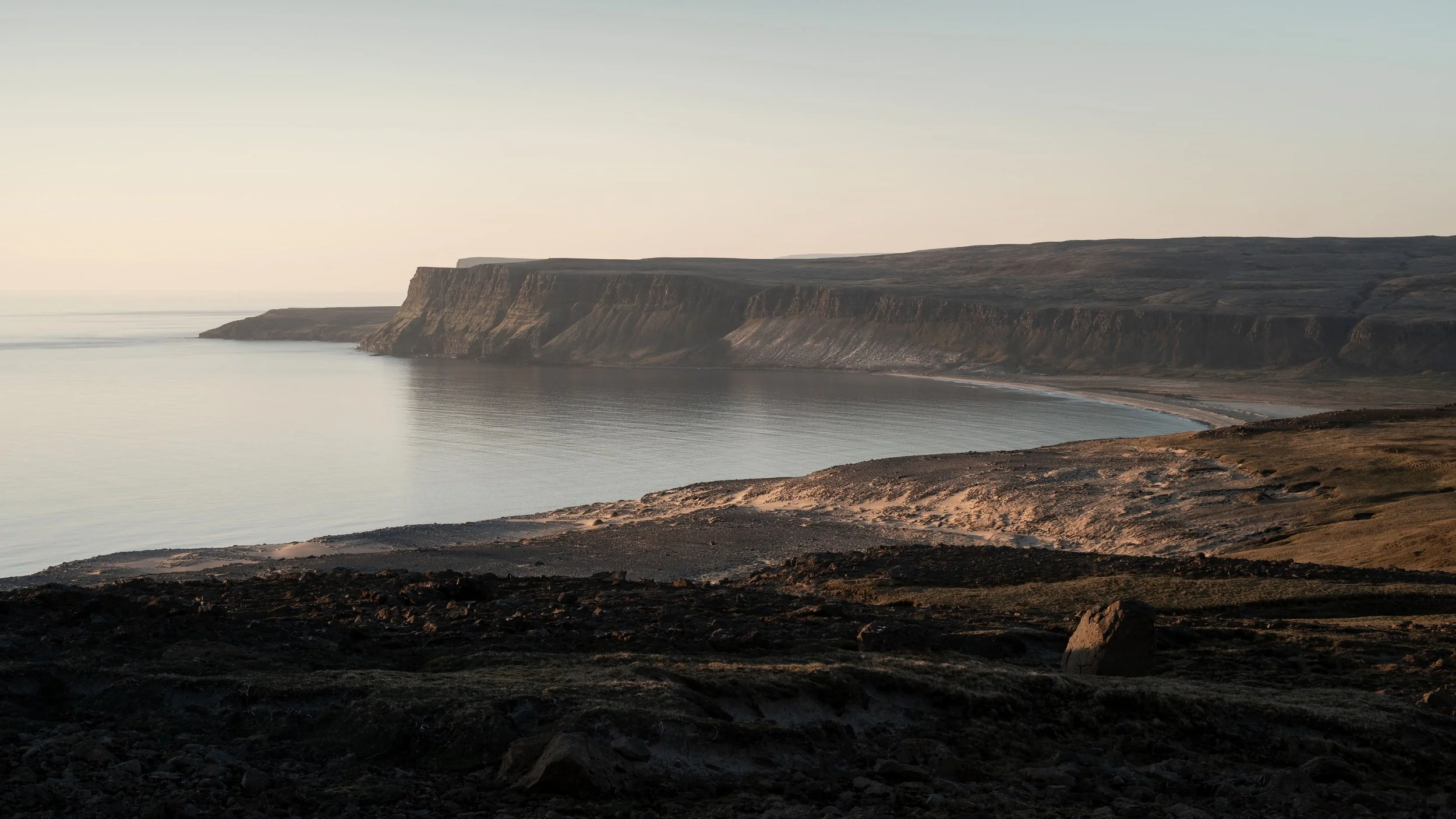The Icelandic Westfjords
It is possible to feel a connection to a place you have never been. If that is the case, that place already lives within you.
It is hard to explain, but you can feel it clearly. Like a a silent call that cannot be ignored.
This is the story of a journey that transformed our understanding of travelling. A necessary trip to close chapters and open new ones.
A journey to a place that echoed in my thoughts and, after experiencing it, now lives within me more powerfully than ever.
This is the story of our adventure through the Icelandic Westfjords.
I first heard the name Westfjords during my first visit to the country. Someone was mentioning it to another person at a bar in downtown Reykjavík. I immediately searched on Google, but gave up once I realized there was no way that it would fit in my itinerary.
Still, the name stayed with me from that day on.
In the years that followed, I would occasionally come across the name in books, blogs, and posts by other photographers, mostly those living in Iceland. But whenever I tried to dig deeper, there wasn’t as much information as I would have expected, especially compared to other, more frequently visited regions of the country.
The reason is simple: traveling to Iceland is a journey; visiting the Westfjords is a different one.
For those of us who don’t have several weeks or don’t live there, we simply have no choice but to make a decision.
Traveling the popular Ring Road, or even exploring parts of the Highlands, is a tempting option, thanks to its accessibility, amenities, and the abundance of natural and cultural attractions.
Venturing into a region as remote, vast, and rugged as the Westfjords would require adding at least another week to the trip, so it’s no surprise that most travelers opt for other destinations instead.
Surprisingly, and far from being a drawback, this makes the Westfjords one of the most authentic and well-preserved destinations in the world.
As we began planning our route for the trip, I discovered that today there are plenty of helpful resources available. In addition, the people at Visit Westfjords and the Nature Conservation Agency of Iceland were incredibly kind and always willing to help, offering insights that ended up shaping our journey. A heartfelt thank you to them from here.
In the end, we had a well-structured route, with enough room to improvise if needed.
Since it was May, a time known as “between seasons”, we allowed ourselves to book accommodation on the go.
This is something I wouldn’t recommend during high season.
With everything ready, and a 4x4 vehicle (not mandatory, but definitely recommended), we set off on the adventure.
And strangely enough, despite all the planning, we had no idea what we were truly about to experience.
We entered the region from the south, via Road 68, following a counterclockwise route along roads that alternated between asphalt and gravel. A good warm-up for what was to come, and I’d be lying if I said the gravel sections weren’t intimidating at times. Especially at the frequent Blindhæð (blind summits), which can really put your composure to the test in some stretches.
It was shortly after lambing season, so it was common to see sheep with their lambs grazing by the sea, matched only in number by the swans. We counted 50 or 60 in some fields.
We had never seen so many, and certainly never in that kind of setting.
Our first stop was Djúpavík, a place that had been in and out of the itinerary due to its location off the main route.
Laura spotted an accommodation opportunity at an excellent price, and based on what we had already seen of the area, we decided to let it surprise us. And it truly did.
The road was, to say the least, an experience in every sense.
We had never driven on terrain like that before: potholes, cliffs, narrow roads, and blind corners were common.
At times, in our inexperience with this kind of driving, we even considered changing our plans.
Just when things weren’t feeling quite right, we turned around the next fjord, and all the tension vanished…
A small house, surrounded by towering mountains that closed in over a calm sea, bathed in soft, clean light.
The overwhelming feeling of being so tiny in the face of such vastness, with the house offering the only sense of scale in that dreamlike scene.
From that moment on, we stopped constantly: seals soaking in the last rays of sun, dramatic cliffs, powerful waterfalls, high mountains crowned by wind-sculpted ridgelines.
We could hardly believe what our eyes were seeing.
We finally arrived in Djúpavík, where we enjoyed a nice and much-needed dinner, accompanied by a warm conversation with the owners of our accommodation: none other than Hótel Djúpavík.
The hotel itself is a landmark, and the village around it, along with the famous factory and the museum soon to open its doors, together form a true time machine.
Walking through the area constantly pulled you into the past, only to return you to the present moments later.
You couldn’t help but think of centuries gone by, of people’s resilience, of history, of hardship, and of nature’s harshness and kindness alike.
At that moment, with only the songs of the birds still awake and the long fall of the waterfall that crowns the village, we truly felt far from home.
In that instant, finally, we were fully connected to everything around us.
The next morning, we woke up to a sound that anyone who has been to these latitudes, and many others as we later learned, would instantly recognize: the call of the Arctic tern.
Our visit coincided with their migration, and the calm bay that we encountered the night before woke up filled with these beautiful birds.
Hundreds of them flew nonstop from one side to the other, rested on the buildings, and fished throughout the area. The sound of their calls filled the fjord in a true explosion of life.
I remember the words of a local man having breakfast at the hotel with his son, as he told another guest, “They’ve just arrived. They’re migrating. They have taken over the place.”
And they truly had. What surprised us most, however, was learning that this stop, brief yet full of movement, was just one leg of a journey as astonishing as it is long, taking them all the way to Antarctica and back.
These remarkable creatures cross the entire planet, from north to south, migrating to climates suitable for reproduction. A true wonder of nature.
From that point on, we couldn’t stop looking for them, although the truth is, it wasn’t hard to find them. They had truly taken over the place, not just the fjord, but the entire region.
With our hearts full, we retraced our steps back to the main road that would take us to our next stop, Ísafjörður.
The road, which had felt hostile on the way in, was now a relaxed and pleasant drive on the way back.
I wouldn’t have minded a few more kilometers of gravel before we finally returned to asphalt.
The road to Ísafjörður, much gentler than the one to Djúpavík, followed the same pattern: constant stops to enjoy and photograph the beauty of the landscape.
A different light after each fjord, a changing scenery, shifting from coastline to mountain, one after another. We felt like tiny travelers crossing an immense world, indifferent to our presence.
A large white-tailed eagle accompanied us for a short stretch of the road. We decided to drive ahead and wait with the camera ready, but as soon as we stepped out of the car, the wind was blowing hard.
Of course, the bird never came our way. It continued on, sheltered from the gusts by a great rock face that lined one side of the mountain.
It was immediately clear who was local and who wasn’t in that environment.
We were incredibly lucky with the weather. With days that nearly reached 20 degrees, our jackets and thermal gear stayed packed in the suitcase.
We often wondered what it would be like to be there on a harsh winter day, especially considering that just a week before we arrived, snow had fallen across the region and temperatures hadn’t climbed above 5 degrees.
Coming from a place with mostly stable weather, experiencing such extreme changes from one week, or even one day, to the next was hard to wrap our heads around.
We spent a couple of nights in Ísafjörður. Our original plan was packed with activities, but we chose instead to slow down, enjoy the town and rest.
Although it is the capital of the region, it felt nothing like a big city. On the contrary, it seemed like a beautiful village, with colorful Arctic-style buildings and open views of the tall mountains that surrounded it.
We treated ourselves to the local cuisine, visited nearby towns, and bathed in hot spring pools, enjoying a mild climate more typical of July or August.
The Westfjords are one of the oldest regions in the country. Volcanic eruptions stopped here a very long time ago, which is why the beaches have golden sand rather than black, unlike other parts of Iceland.
We didn’t hesitate to visit one of these beaches on our way to our next stop, which invited us in with its clear and calm waters.
Although the water temperature barely reached 5 degrees, so we chose to admire the landscape from the shore.
Our next stop was Patreksfjörður, and the drive there was just as beautiful as the previous one. It followed mostly inland routes, which significantly shortened the driving time.
Along the way was one of the region’s major tourist attractions.
It’s impossible to research the area without finding it mentioned in nearly every article and website that talks about the region.
We don’t usually enjoy places like this.
It’s not that we don’t appreciate their beauty or uniqueness, but rather that it’s hard to feel a real connection in locations under heavy human pressure.
That’s why we had only marked it as optional in our itinerary.
Still unsure, we were driving along the winding road, curve after curve, when suddenly we saw it.
I remember a sense of being visually overwhelmed, in line with everything else in the region.
Far from being a typical tourist attraction, Dynjandi left us speechless…
Around 480,000 liters of water cascade from a height of 99 meters, crashing against basalt rocks every minute. Some sources say it has been flowing like this every summer for approximately 10.000 years.
Once again, the sense of scale and time swept through our minds.
Dynjandi is, in fact, the largest of seven waterfalls that descend from the top of the mountain wall. Each one has a name, although people generally refer to the entire group simply by naming the main one.
Such a display of raw power confirms, once again, that everything in the Westfjords exceeds expectations.
Just after checking in at our accommodation in Patreksfjörður, we set out to catch the golden hour at one of the area’s most famous spots: Rauðisandur (Red Sand), an endless beach known for its reddish-golden sand.
I made a small miscalculation, which meant we arrived just as the sun was disappearing behind the mountains, so we only had time to take a few photos from the road, which, by the way, was quite an interesting experience.
I would definitely recommend a 4x4 vehicle with good brakes to get there, but the adventure is absolutely worth it.
I felt a bit frustrated, since I had envisioned a few shots I was really excited to take, but that feeling quickly faded the moment I returned to the present and became aware of everything around me.
The vastness and silence of the place, the sea in absolute stillness forming an infinite mirror that reflected the sky and the mountains.
It’s a feeling only those who have experienced it can truly understand, as if you’re in some kind of temporal limbo, where silence becomes audible and your eyes struggle to absorb so much beauty.
Your mind refuses to believe what it’s seeing, while your conscious self tries to process it.
It’s a feeling that’s hard to put into words, and honestly, the photos I had planned wouldn’t have done the place justice.
As we were getting ready to head back, we noticed a few people on the shore next to something that seemed to be moving in the water. As we got closer, we saw it was a family: a father, mother, and their young daughter. And in the water, a baby seal.
We spoke with them from the road and approached. The current had dragged the pup onto the rocks that separate the beach from the road at that point, and when the tide went out, she had been left stranded, far from her colony.
The family, who lived in a nearby house, were helping her by pouring water over her body so the sun, which had been shining all day, wouldn’t dry out her skin.
The tide had started to rise again, and she could move a little, though the long hours on dry land had clearly drained her strength.
As locals familiar with the area, they had already spotted another common species in the region, an Arctic fox watching the scene from a distance.
A mix of emotions ran through our minds.
Is it right to intervene? Should we let nature take its course? What if by helping, we actually make things worse?
Everyone has a different opinion about it, but the five of us, including the most concerned of all, the little girl, agreed that we had to do something.
We stayed by her side while the tide kept rising. She let herself float, and with what little strength she had left, called out for her mother.
We walked alongside her with worry, watching as the current slowly carried her away.
Suddenly, as if a beam of light had cut through the night, we heard a response to her calls. It was her colony. Her family.
From a distant sandbank, they were calling back. She answered, and it was clear they were communicating.
Our hearts raced, and we cheered the pup on to gather strength and keep swimming: Vamos pequeña! Tu puedes! Haltu áfram! Ekki gefast upp! Just a few meters more! We shouted from the shore in all three languages.
The current carried her towards a point farther out at sea, where her family was also heading. In the distance, we watched them come closer and closer, until they were too far away to follow.
There was nothing more we could do but hope for the best.
And I chose to keep that moment just for us, instead of picking up my camera. Another decision I don’t regret.
We took our last full day in the region at a slower pace, enjoying the comfort of our accommodation and visiting a nearby hot spring. Although, with temperatures close to 20 degrees, it felt more tempting to stay outside than to step into a pool heated to nearly 40.
For sunset, we chose another major attraction in the area: Látrabjarg, one of the largest bird cliffs in Europe.
Better organized than the day before, we headed in that direction hoping, as always, to find more than we were looking for. And that’s exactly what happened from the very start.
Even though we were already quite used to gravel roads with the occasional rough patch, the one leading to Látrabjarg took first prize.
Its condition wasn’t that different from the others, but it felt longer, and the potholes, noticeably more frequent, made it especially demanding. At least, that was our experience.
Although seeing some locals driving comfortably in regular passenger cars, we wondered if it was just our perception.
When we arrived, the sun was still fairly high, so we took the chance to walk along the trail that runs alongside the cliff.
The cliff itself, by the way, rises over 400 meters, making the views both spectacular and intimidating.
In some spots, the sound of the birds was deafening. Hundreds of thousands of gulls squawking and flying at high speed, carried by the wind in a stunning display of aerial control.
The scene was breathtaking, and we felt like we had stepped into a paradise for birdwatchers and wildlife photographers, equipped with powerful lenses to spot the many species present there, including what is likely the country’s most popular and most photographed bird: the Atlantic Puffin.
Since they were so far away, we could only assume it was them, and I knew Laura was really hoping to see one up close.
At times, I worried that the long drive might not have been worth it, despite the beauty of the surroundings.
When we arrived at the parking area, we noticed many photographers leaning over a cliff just a few meters from the cars.
We walked over, but didn’t see anything particularly noteworthy, until suddenly, a gust of wind brought a Puffin gliding in and landing gracefully on the cliff’s edge, less than two meters from one of the photographers.
Our eyes lit up. We moved closer to admire it, and moments later, dozens of them followed, calmly settling beside us.
As if we were just another part of that lively landscape.
Laura was thrilled, and I felt relieved, also amazed by a sight I had never witnessed so closely in my previous visits to the country.
The sun was already low in the sky, and we took countless portraits of the puffins as they returned to their nests after a long day fishing along the cliffs.
Once again, we found much more than we had set out to find.
Photo by Laura P.
The next day, we drove to Vatnsfjörður, a nature reserve we wished we had had more time to explore in depth.
The place is also known for the story of Hrafna-Flóki (Raven-Floki), who, during his attempt to settle in the country one winter, climbed a mountain and declared that this vast and frozen land would be called Ísland (Iceland).
By late afternoon, we boarded the ferry from Brjánslækur to Stykkishólmur, on the Snæfellsnes Peninsula, surrounded by thick fog. And although our journey continued for a few more days in the southern regions, we felt like we should have stayed longer.
We had enjoyed the most incredible weather we could have hoped for, and we thought that the fog was nature's way of reflecting our sadness at leaving such a dreamlike place.
At the beginning, I said this trip changed the way we think about travel. And it truly did. Because more than tourists, we felt like we belonged there.
From towering mountains to crashing waves, from fierce winds to gentle breezes that seemed to pause time, and from quiet walks through muted towns under the midnight sun.
Our connection with the Westfjords was genuine, born from respect and appreciation for the place, its people, history and legacy.
It will be hard for us to travel again to places where we don’t feel that same bond. That feeling in your stomach that tells you something is special. That call you just know you have to answer.
We are already counting the days until we return, to feel that warm light embrace us, to breathe in that clean air, and to exist once again in that distant place where we truly felt at home.
Words by Sebastian Lom
Images by Sebastian Lom and Laura P.






